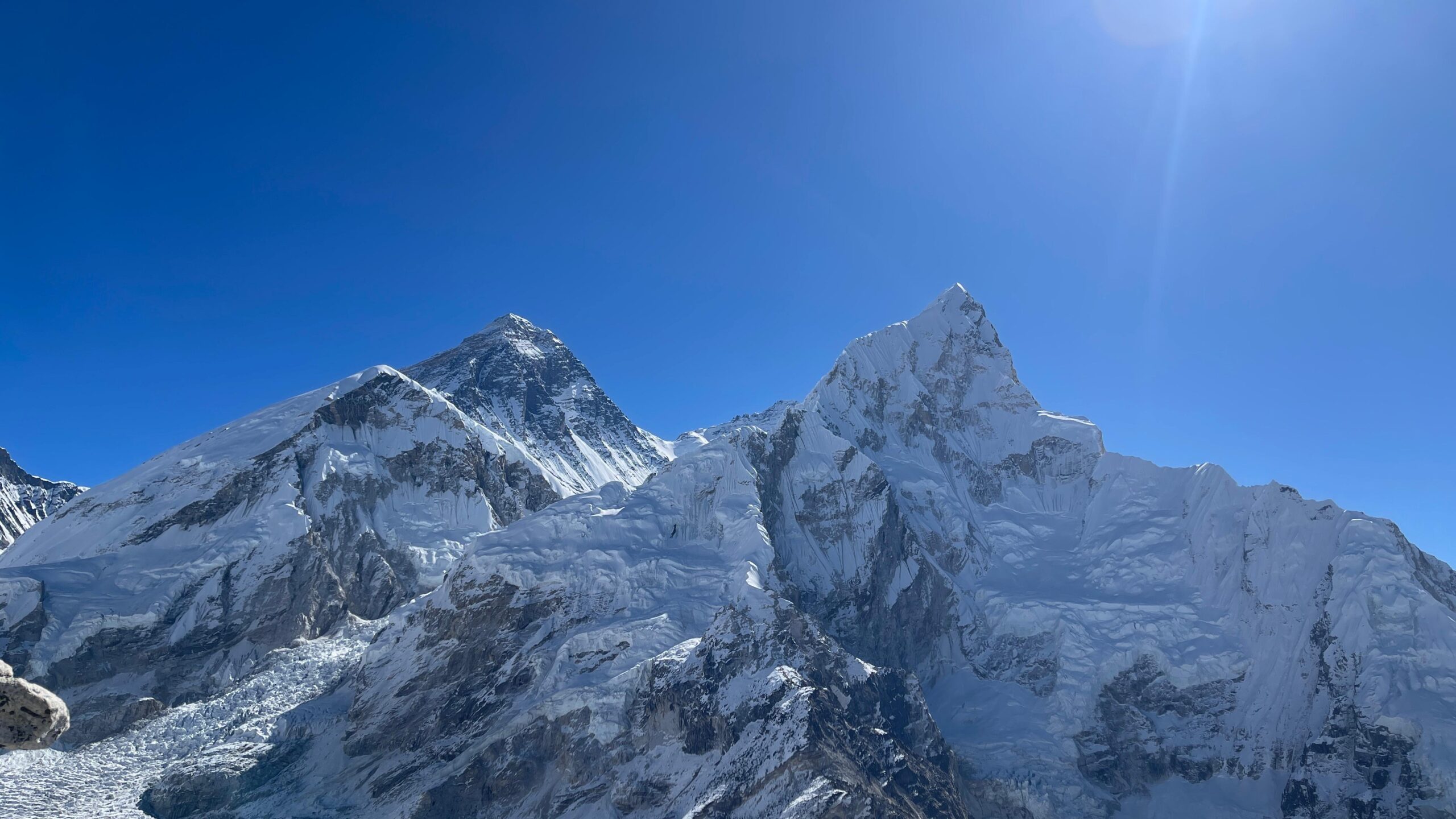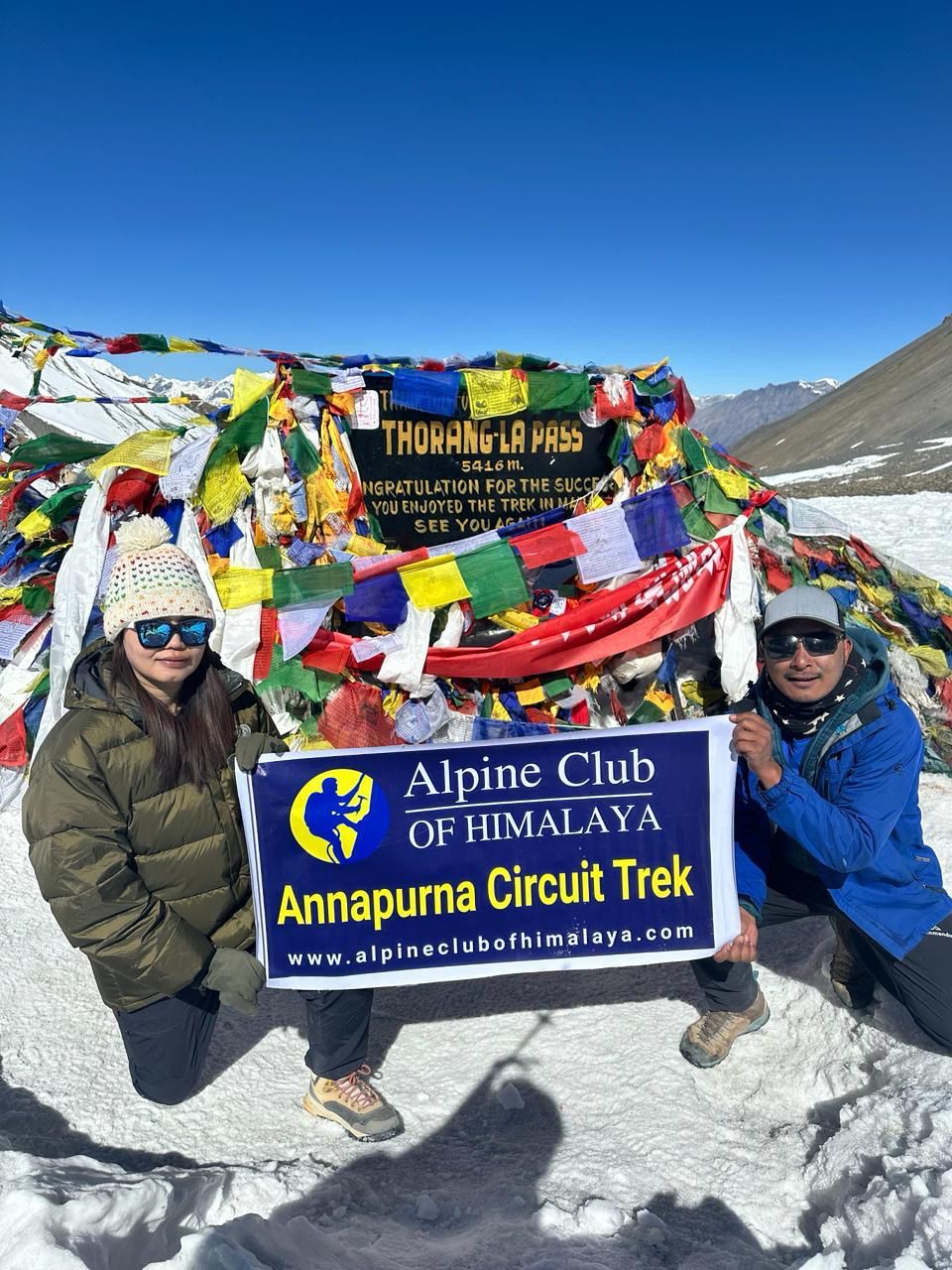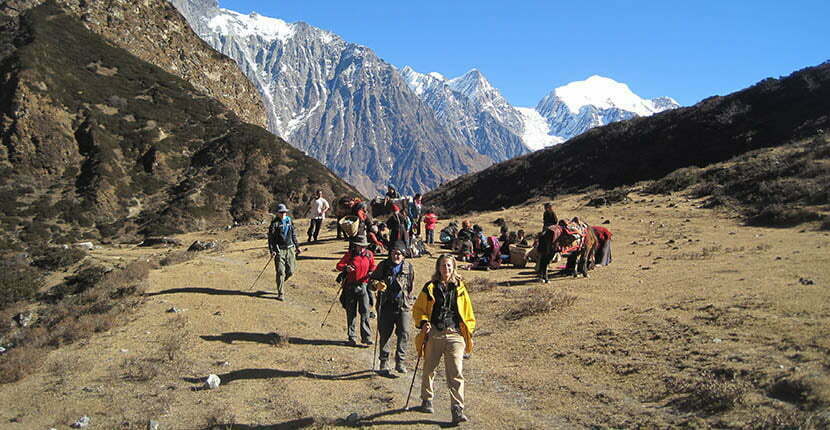Island Peak Aggressive Climb is an adventure that takes you to Nepal’s renowned trekking destination, the Everest region. The region is a dream location for trekkers, climbers, and travelers, and is home to a wide range of biodiversity and ancient culture. Island Peak Aggressive Climb is a UNESCO World Heritage Site that falls under the Sagarmatha National Park.
The Island Peak, also known as Imja Tse, takes you to one of the least visited sections of the Khumbu region and is an ideal peak for beginners as well as advanced climbers. It stands at an elevation of 6,189 meters and is one of the most popular trekking peaks in the region. The peak was first summited by Tenzing Norgay, Alf Gregory, Charles Wylie, and Charles Evans in 1953 and has since become an ideal destination for mountain lovers and thrill-seekers.
Starting of our Tour
Your journey of the Island Peak Aggressive Climb starts with a flight from Kathmandu to Lukla, one of the gateways to the Everest region and the official starting point of your trek. From Lukla, you will head towards Phakding and then to Namche Bazaar, the Sherpa capital, and a commercial center in the Everest Region. After an acclimatization excursion at Namche Bazaar, you will head towards Tengboche, where you can visit the ancient Tengboche Monastery and discover the legends and cultures of the locals.
From Tengboche, you will trek towards Dingboche, passing birch, conifer, and rhododendron woodlands, with mesmerizing views of Mt. Everest, Lhotse, and Ama Dablam. After that, you will head towards Chukkung, where you will have a day off for yet another acclimatization excursion. You can head towards Chukkung Ri, a vantage point of the region. From Chukkung, you will head towards Island Peak Base Camp, following the trail across the Lhotse icefall and Imja glaciers. After pre-climbing training at the base camp, you will head towards the summit of Island Peak.
Island Peak Aggressive Climb is not too technical, but you will be using crampons, ladders, and fixed ropes at some sections. From the summit, you can witness views of Lhotse, Ama Dablam, Makalu, Baruntse, and other endless peaks of the greater Himalayan range. After spending a brief time at the summit, you will retrace your steps back to the base camp. Next, from base camp, you will retrace your steps back passing several settlements and sections of lush wilderness to the bustling Namche Bazaar. Finally, from Namche, you will head back to Lukla and catch a flight to Kathmandu the following day. Be a part of this thrilling climb with the Alpine Club of Himalaya and bring your dreams into reality.
Entry Permits & Requirements:
The following Permits are required for Island Peak Climbing.
- Sagarmatha National Park Entry Permit.
- Khumbu Rural Municipality Entrance Permit.
- Island Peak Climbing Permit.
You can get a Sagarmatha National Park Entry Permit from the Nepal Tourism Board office in Kathmandu or the park’s entrance gate in Monjo which fee is NRS 3000 for foreign countries citizens and NRS 1500 for citizens of SAARC countries.
You must fill out an application for permission and show your passport or a copy of your passport. To obtain the Khumbu Pasang Lhamu Rural Municipality Entrance Permit, you must be in Lukla. The permit costs NRS 2000 and can be obtained at the rural municipality counter on the settlement’s outskirts.
The climbing permit fee for Island Peak Aggressive Climb varies according to season.
- The permit fee for Spring (March to May) – USD 250
- The permit fee for Autumn(September to November) – USD 125
- Off seasons (December to February and June to August) – USD 70
If you want to hike from Jiri, you’ll need to pay NRS 2,000 at the Gaurishanker Conservation Area Project Entry Permit or you must receive a permit from the Nepal Tourism Board’s headquarters in Kathmandu.
You won’t have to worry about waiting for permits since the Alpine Club of Himalaya or our guides will take care of everything.
Meals and drinking water:
Everest region Trek is one of the most facilitated trekking destinations in the country, providing basic to luxury ones.
In this trial, you’ll be provided with a variety of cuisine to choose from. Nepali, Tibetan, Indian, and Western as well as continental meals. As the region has small tea houses to luxury hotels the facilities they provide are basic to grandeur according to your budget. Try various traditional cuisine and popular snacks and delicacies renowned in the region.
Similarly, drinking water is accessible with natural water supplies which are untreated, so direct use of the water is not recommended, you may refill boiling water or cold filter water from any of the teahouses. However, if you buy a water purification tablet, chlorine drops or utilize SODIS (sunlight assisted) filtration procedures for further assurance, saving money and reducing plastic pollution.
Accommodation:
Accommodations are available in trekking lodges, and teahouses as well as a number of hotels all along the trail, providing basic well-maintained, and reasonably luxury 5-star ones with additional needs according to your budget. Tea houses on the trail vary in quality and price, depending on the amenities they feature.
The tea house room has to share a bed and some basic furniture like a small table or a chair. Normally, beds contain pillows and sheets and almost all tea houses provide extra blankets as it will be freezing at night. Usually, hot showers are available throughout the trek.
For trekkers who want to Camp, various campsites are available along the. From Base Camp, you will be accommodated in makeshift camps. In Kathmandu, you will be staying in 3-star hotels.
Best Time to Visit?
The best season for trekking to the Everest region is during the season of autumn and spring, the months of September, October, November, March, April, and May.
During the autumn season, the months of September, October, and November the weather is clear with warm temperatures and the visibility is great. As the weather is mild it’s very easy to get around the region.
The spring season of March, April, and May is also the best time to visit the Everest region, marking the end of the winter, the spring season brings a change in the topography of the region and the destination comes to life with endless rows of different colored rhododendron, moss, and orchid draped trees, colorful undergrowth stretching for miles and the snowy white mountains peaks on the backdrop of clear blue skies.
Monsoon season is not favorable for trekking as the weather gets harsh and it’s hard to get around the country with frequent landslides and floods. So usually, monsoon season is avoided by trekkers.
In the winter season, the area receives a high amount of snowfall, covering most of the trail and access is denied to most of the regions of Everest, making it impossible to trek.
Travel Insurance:
All clients participating in any activity must have travel insurance. Personal injury, death, hospital expenditures, repatriation fees, and helicopter rescue. Any other disease covered by the insurance plan will be given. We highly advise you to acquire a comprehensive insurance plan from a trustworthy insurance company.
Passport and Visa:
Every client must have a valid passport from the return date with a 6-month prior validity by the Nepalese consulate in your country or the immigration office at Tribhuvan International Airport in Kathmandu.
Equipment lists:
General Equipment required:
- Find the guidelines regarding essential trekking gear.
- Daypack above 40 liters. (Must be waterproof)
- Down jacket (rental available)
- Warm sleeping bag (rental available)
- Sun head, gulf cap, sunglasses, headlamp, and torchlight.
- Ear-muffs, wooly Hat, Fleece Balaclava
- Sun Lotions/sun cream.
- One pair of liner gloves is thin wool and synthetic.
- Cotton t-shirts, Synthetic t-shirts.
- Thermal Top, Fleece Salopettes, Thin Fleece
- Body Warmer – Thick Fleece -Schoeller Trousers
- Long-sleeve polyester or synthetic lightweight for sunny days.
- One Soft-shell jacket (water & wind resist)
- Inner clothes as your requirement.
- Liner socks, woolen socks.
- Proper trekking shoes, Sandals
- Imodium or Pepto Bismo capsules for upset stomach or diarrhea.
- Diamox for altitude sickness. The guide will help you to take it.
- One small personal-sized first-aid kit with blister treatments such as moleskin, bands,
- anti-infection ointments, and muscle relief ointments
- Wet wipes
- Vitamin Tablets
Technical Equipment required:
- Ice Axe, Ice Hammer
- Harness, Crampons, Ice Screws
- Belay Plate, Jumar and Ropeman, Prussicks
- Rack – Tat + Maillons – Abalokov Threader
- Head Torch x 2 – Spare Batteries + bulb – Rope
- Helmet – Radio + Batteries – Spare Pick
- Repair Kit (tape, superglue, string, cable ties, strap, needle, thread, leatherman with pliers)
Essential Personal Climbing Gear:
- Alpine Climbing Harness
- Crampons
- Ice axe
- Ascender
- Multi-LED Head Lamp
- Karabiners
- Rappel device
- Ski poles
- Slings
- Climbing helmet
Clothing
Upper Body:
- One T-shirt Icebreaker Merino 150 or lightweight 200.
- Two long Icebreaker Merino 150 or lightweight 200 shirts.
- One polar fleece pullover, medium weight.
- One polar fleece jacket.
- One Gore-Tex waterproof and breathable jacket with a large hood to accommodate a climbing helmet.
- Lightweight down jacket for chilly days in base camp or warm layer when stopping for short breaks.
- One very warm goose-down (duvet) jacket with hood or a down/duvet suit if you prefer, for high altitude use.
Hands:
- One pair of lightweight poly-liner gloves.
- One pair of mittens consists of 1 Goretex over mitt matched with the very warm polar fleece mitt liner
Heads:
- Warm hat wool or synthetic that covers your ears
- Balaclava
- Scarf or neck sleeve
- Face mask
- Ball cap or brimmed sun cap
- Glacier Sunglass with side shields
Lower Body:
- One pair of walking shorts for trekking
- Two pair Icebreaker Merino 150 or lightweight 200 thermal bottoms
- One pair of Icebreaker Merino 200-weight thermal bottoms
- One pair of polar fleece trousers
- One pair of Gore-Tex trousers or bibs. Waterproof/breathable with full side zips
- One pair of Goose-down (duvet) trousers or bibs. You may prefer a down (duvet)
Feet:
- One pair One-Sport Millet climbing Overboots or equivalent (with Aveolite liners; good quality plastic shells with inner boots; avoid tight fit with heavy socks.)
- One pair of sturdy leather or synthetic (Gortex) hiking boots with good ankle support for the walk to advanced base camp
- Two Pairs of liner socks. Polypropylene or wool
- Two pairs of lightweight trekking socks, poly or wool
- Light Icebreaker Merino wool or cotton socks for in-town.
Rucksacks and Travel Bags:
- One medium rucksack (50-70 liters / 3000-4500 cubic inches, can be used for airplane carry).
- One large (120 L / 7500 cubic inches) duffle kit bag for clothing and equipment. Must be durable for use on pack porter.
Sleeping Gear:
- For high altitude, one down (duvet) sleeping bag (rated to –25 C (-30 F). In the high camp, you can sleep in your down (duvet) clothing inside your sleeping bag;
NOTE: All of the aforementioned trekking hours are approximations and should only be used as a general guideline.
Important Note :
Your safety is of paramount importance to us at the Alpine Club of Himalaya. We have the absolute authority to cancel the trip or change the itinerary, when deemed necessary or when we have reason to believe your safety is at stake. Weather conditions, the health condition of a group member, natural disasters, and such, can contribute to changes in the itinerary when traveling in remote mountainous regions. In these extreme situations, we kindly request that you offer your full cooperation to the trusted leader of the group appointed by Alpine Club of Himalaya. However, we assure you that we will make every effort to keep to the above itinerary.
Trek Highlights
- Scale Island Peak, at an elevation of 6,189 meters.
- Witness panoramic views of endless magnificent summits.
- Trek through Sagarmatha National Park a UNESCO world heritage site.
- Travers across the deep wilderness, high alpine valleys, and rocky terrain.
- Walk breath the world’s tallest mountains.
- Observe and learn about the culture and lifestyle of the mountain people.
- Visit ancient monasteries and Gompas of the region.
- Try various cuisines and delicacies of the region.

















Write a Review